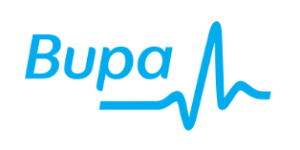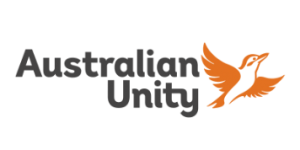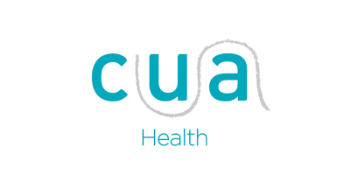Back Pain Brisbane
Back Pain Brisbane – Don’t let back pain control your life – expert back solutions work quickly. Knead Massage. We make pain disappear
- Back pain Brisbane – episode of back pain are very common.
- 80% of Australians will experience a severe episode of back pain during their lifetime.
- 25% of people exist with daily low back pain
- Back pain is a leading cause of disability world wide
- Australians spend an estimated 5 billion dollars annually treating back pain.
What are the symptoms of Back Pain?
Low back pain can vary a great deal, however the most common symptoms are:
- Pain in movement transitions – sitting into standing, or lying into sitting
- Pain when rolling over in bed
- Pain while on the toilet
- Pain when bending forward
- Muscle tightness and spasm
- Pain from prolonged sitting
- A sharp burning pain
- Tingling or numbness in the lower half of the body.
What causes lower back pain?
A list of common triggers of low back pain (most to least common):
- Repetitive movements (bending to pick up toys or rubbish)
- Pregnancy
- Excessive movement in the spine (too much flexibility) and restricted mobility in the hips
- Sitting for extended periods habitually
- Heavy loading of the spine – particularly through a bent position
- Impinged or inflamed nerve
- Disc bulge
Statistically, the majority of back pain is self limiting and will resolve within a few weeks. Most back pain is not the result of a disc bulge.
Get the most from your treatments – book in with our expert back pain brisbane therapists
Exposure to physical loads is not a linear relationship - no load and too much load are both harmful.
Professor Stuart McGill, World Leading Spinal Expert
Mechanical Pain
Mechanical pain is a broad term to describe back pain caused by cumulative aggravation.
The two most common causes of muscle spasm in low back disorders are considered mechanical issues:
- ligament strain (a tissue that connect one bone to another [usually vertebrae to vertebrae in back pain])
- or facet joint mal tracking from an unexpected position.
For both of these causes muscles will spasm in response to pain generating signals from the irritable ligament or joint.
Book your Back Pain Treatment Now
The most common factors that lead to mechanical back pain include:
- Stiff hips – when people forward bens without enough hip movement, they must bend through the back. The spine is designed to share this load with the hips, which are the midpoint hinge of our skeleton.
- repetitive movements
- New activities in the habitually sedentary
- postural considerations (such as daily sitting)
- unstable spinal segments (often attributed to weak core strength – many causes including high body mass, pregnancy, sedentary lifestyle, recovery from injury)
- Unstable spinal segments caused by stretched spinal ligaments (most commonly associated with pregnancy)
- Overloading (lifting beyond capacity)
- Spending greater than 2 hours per day in a vehicle (vibration and excessive sitting without muscular activation to absorb force)
- Extreme leg length discrepancy (approx. 5cm difference)
- Age related change to vertebral joints, pelvis and the hips (arthritic change, modic change [oedema in the bone] and spinal stenosis)
Mechanical pain can often be reduced by finding the offending posture or movement and strengthening the muscles that reverse it. Improving movement patterns such as sit to stand, the squat or deadlift can also radically improve low back pain by reducing the constant irritation to the angry structure through a “correction”.
These types of symptoms often respond well to Remedial Massage. Remedial Massage is especially in the early “acute” stages.
Radicular Pain
Radiculopathy refers to pain caused by nerve compression. Nerve sensations often include:
- Numbness
- Burning
- Hyper sensitivity (finding non-noxious stimulus painful – such as superficial hand contact)
- A shooting “electrical” sensation
- Tingling
- Muscle weakness
These types of symptoms are best treated by a Myotherapist.
Sciatica
Sciatica is a type of radicular pain that involves shooting pain or tingling from the low back into the gluteal muscles, thigh and sometimes the calf and foot. Sciatica can be a fairly in depth condition – you can read about it here.
Disc bulge can cause radicular pain also – if you have been diagnosed with a bulging disc and wish to learn more about treatment strategies you can do that here.
What is Sciatica?
A concise explanation of what sciatica nerve pain is, what causes it and how physical therapy such as myotherapy and remedial massage can provide sciatic nerve pain relief. If you are looking for sciatica pain treatment in Brisbane CBD call Knead, we can help!
What should you do?
- An assessment by a Remedial Massage Therapist or Myotherapist will identify the cause of your pain and the movements that will allow you to take your pain away at home.
- If you are in muscle spasm, early treatment from a qualified Remedial Massage Therapist can save you days and weeks of discomfort.
- Find which movements are causing your irritation and modify them so that they don’t provoke any mechanical pain symptoms.
What shouldn’t you do?
- Don’t endlessly stretch your hamstrings and back. This may provide a temporary relief from pain (approximately 20 minutes which is caused by neurochmeicals that are released from the stretch reflex), but often stretching is just aggravating angry nerve structures and inflamed ligaments – creating more inflammation and irritation. Stretching is not usually the solution to back pain and often makes it worse.
- Don’t assume your pain is a disc bulge or arthritis – get an assessment and find the best solution to your pain.
- Don’t spend all day in bed. Fast walking is one of the most powerful ways to reduce inflammation in the spinal segments and activate the core – which helps the body re-learn force distribution. Some individuals find slow swimming to be an amazing way to reduce back pain. The rule of thumb is if an activity reduces pain in a meaningful way (an effect that lasts more than a few hours) – you should do it regularly.
- Don’t focus on getting imaging before you see a Remedial Massage Therapist or a Myotherapist. Imaging can report lots of “faults in the back” that do not correlate to pain.
How is the condition treated?
Knead Massage and Myotherapy Brisbane have a special interest in back pain. We offer a rapid non-invasive solution to many chronic pain states originating in the lumbar spine. Our expert remedial massage therapists will assess your spine and movements and work effectively to reduce your discomfort and remove muscle spasm.
If you are suffering from nerve pain or disc bulge symptoms booking in for a Myotherapy assessment is one of the most efficient things you can live pain free. Our Myotherapists will treat your pain using the latest evidence based treatment techniques such as low level laser and electro dry needling, provide expert manual therapy and show you how to take your pain away yourself with a movement based strategy. Learning how to control your pain yourself, is the most powerful thing to recover from chronic conditions such as sciatica.
RESOLVE SCIATICA AT HOME!
Frequently Asked Questions (FAQs)
Stabbing back pain is a common descriptor for many people. The causes of stabbing pain in the back may be considered mechanical:
- ligament strain (a tissue that connect one bone to another [usually vertebrae to vertebrae in back pain])
- or facet joint mal tracking from an unexpected position.
Nerve pain is also frequently described as stabbing pain. Nerve pain occurs when a nerve structure is compressed by muscles, bones or possibly bulging disc material.
If you have a stabbing quality to your back pain book in for a myotherapy assessment and treatment as soon as possible.
The most common factors that lead to mechanical back pain include:
- Stiff hips – when people forward ben without enough hip movement, they must bend through the back. The spine is designed to share this load with the hips, which are the midpoint hinge of our skeleton.
- repetitive movements
- New activities in the habitually sedentary
- postural considerations (such as daily sitting)
- unstable spinal segments (often attributed to weak core strength – many causes including high body mass, pregnancy, sedentary lifestyle, recovery from injury)
- Unstable spinal segments caused by stretched spinal ligaments (most commonly associated with pregnancy)
- Overloading (lifting beyond capacity)
- Spending greater than 2 hours per day in a vehicle (vibration and excessive sitting without muscular activation to absorb force)
- Extreme leg length discrepancy (approx. 5cm difference)
- Age related change to vertebral joints, pelvis and the hips (arthritic change, modic change [oedema in the bone] and spinal stenosis)
Low back pain can vary a great deal, however the most common symptoms are:
- Pain in movement transitions – sitting into standing, or lying into sitting
- Pain when rolling over in bed
- Pain while on the toilet
- Pain when bending forward
- Muscle tightness and spasm
- Pain from prolonged sitting
- A sharp burning pain
- Tingling or numbness in the lower half of the body
The most common factors that lead to mechanical back pain include:
- Stiff hips – when people forward ben without enough hip movement, they must bend through the back. The spine is designed to share this load with the hips, which are the midpoint hinge of our skeleton.
- repetitive movements
- New activities in the habitually sedentary
- postural considerations (such as daily sitting)
- unstable spinal segments (often attributed to weak core strength – many causes including high body mass, pregnancy, sedentary lifestyle, recovery from injury)
- Unstable spinal segments caused by stretched spinal ligaments (most commonly associated with pregnancy)
- Overloading (lifting beyond capacity)
- Spending greater than 2 hours per day in a vehicle (vibration and excessive sitting without muscular activation to absorb force)
- Extreme leg length discrepancy (approx. 5cm difference)
- Age related change to vertebral joints, pelvis and the hips (arthritic change, modic change [oedema in the bone] and spinal stenosis)
Low back pain can vary a great deal, however the most common symptoms are:
- Pain in movement transitions – sitting into standing, or lying into sitting
- Pain when rolling over in bed
- Pain while on the toilet
- Pain when bending forward
- Muscle tightness and spasm
- Pain from prolonged sitting
- A sharp burning pain
- Tingling or numbness in the lower half of the body
Low back pain can vary a great deal, however the most common symptoms are:
- Pain in movement transitions – sitting into standing, or lying into sitting
- Pain when rolling over in bed
- Pain while on the toilet
- Pain when bending forward
- Muscle tightness and spasm
- Pain from prolonged sitting
- A sharp burning pain
- Tingling or numbness in the lower half of the body
Mechanical pain is a broad term to describe back pain caused by cumulative aggravation.
The two most common causes of muscle spasm in low back disorders are considered mechanical issues:
- ligament strain (a tissue that connect one bone to another [usually vertebrae to vertebrae in back pain])
- or facet joint mal tracking from an unexpected position.
For both of these causes muscles will spasm in response to pain generating signals from the irritable ligament or joint.
Radiculopathy refers to pain caused by nerve compression. Nerve sensations often include:
- Numbness
- Burning
- Hyper sensitivity (finding non-noxious stimulus painful – such as superficial hand contact)
- A shooting “electrical” sensation
- Tingling
- Muscle weakness
All back pain is worth investigation by a Remedial Massage Therapist or Myotherapist. However back pain is an EMERGENCY SITUATION if it is associated with a loss of bladder or bowel control. If you have back pain and loss of toileting control call 000 immediately.
Back pain can also be caused by visceral organs such as the kidneys, bowel and liver. If you have back pain that does not respond to treatment, consult your GP immediately.
The most common location of back pain in pregnancy is just above the tailbone. This is caused by:
- a hormone called relaxin, which makes the ligaments of the pelvis more flexible – which causes inflammation
- a changing pelvic position which leads to low back vertebrae compressing against each other.
Upper back stiffness between the shoulder blades is also very common during pregnancy – especially in individuals that use computers.
The most common location of back pain in pregnancy is just above the tailbone. This is caused by:
- a hormone called relaxin, which makes the ligaments of the pelvis more flexible – which causes inflammation
- a changing pelvic position which leads to low back vertebrae compressing against each other.
The most common location of back pain in pregnancy is just above the tailbone. This is caused by:
- a hormone called relaxin, which makes the ligaments of the pelvis more flexible – which causes inflammation
- a changing pelvic position which leads to low back vertebrae compressing against each other.
Morning pain is usually associated with reduced circulation and inflammatory chemicals in the joints. Movement is a powerful lubricating force for these joints by encourage fluid into the capsules of the joints.
The question is not this simplistic, but this is one of the more common rationales.
Most episodes of non specific low back pain resolve within 6 weeks – however 20% do not.
Understanding what causes your back pain is a powerful way to overcome the pain. If you have not been assessed by a professional, you do not know:
- which tissues are angry
- which movements reduce pain
- what you should be doing to unwind pain
Most episodes of non specific low back pain resolve within 6 weeks – however 20% do not.
Understanding what causes your back pain is a powerful way to overcome the pain. If you have not been assessed by a professional, you do not know:
- which tissues are angry
- which movements reduce pain
- what you should be doing to unwind pain
Most episodes of non specific low back pain resolve within 6 weeks – however 20% do not.
Understanding what causes your back pain is a powerful way to overcome the pain. If you have not been assessed by a professional, you do not know:
- which tissues are angry
- which movements reduce pain
- what you should be doing to unwind pain
Most episodes of non specific low back pain resolve within 6 weeks – however 20% do not.
Understanding what causes your back pain is a powerful way to overcome the pain. If you have not been assessed by a professional, you do not know:
- which tissues are angry
- which movements reduce pain
- what you should be doing to unwind pain
https://www.healthdirect.gov.au/back-pain
https://www.mayoclinic.org/healthy-lifestyle/adult-health/in-depth/back-pain/art-20044526
https://www.abc.net.au/news/health/2018-06-11/treating-lower-back-pain-without-drugs-and-surgery/9850798
https://www.abc.net.au/news/health/2015-09-04/7-surprising-back-pain-facts/6747546
https://www.abc.net.au/health/talkinghealth/factbuster/stories/2010/04/08/2867084.htm
https://www.sydney.edu.au/medicine-health/news-and-events/2019/11/12/exercise-is-the-best-medicine-for-managing-back-pain.html
https://www.bbc.com/news/av/world-us-canada-52359102
http://news.bbc.co.uk/2/hi/health/639884.stm
https://www.ncbi.nlm.nih.gov/pmc/articles/PMC406328/
https://www.ncbi.nlm.nih.gov/pmc/articles/PMC7601155/
https://www.ncbi.nlm.nih.gov/pmc/articles/PMC6279433/
https://www.ncbi.nlm.nih.gov/pmc/articles/PMC7220115/
https://www.ncbi.nlm.nih.gov/pmc/articles/PMC7588406/
McGill, S. (2007).Low back disorders: Evidence-based prevention and rehabilitation. Champaign, IL: Human Kinetics.
Related Posts
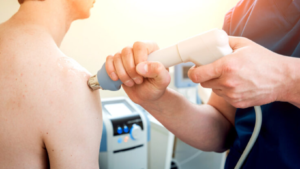
Frozen Shoulder Brisbane
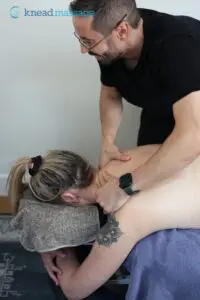
Remedial Massage Brisbane: The Ultimate Guide
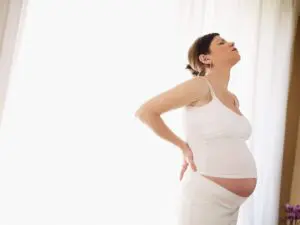
SIJ Pain Brisbane

Roger Morelli


Latest posts by Roger Morelli (see all)
- Lymphatic Drainage Massage Benefits - October 18th, 2024
- Lymphatic Compression Pump Therapy Brisbane - October 16th, 2024
- Lymphoedema Brisbane - October 14th, 2024


